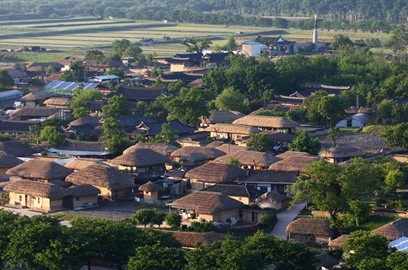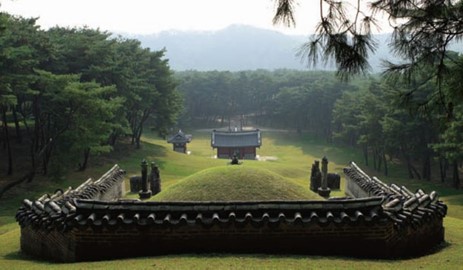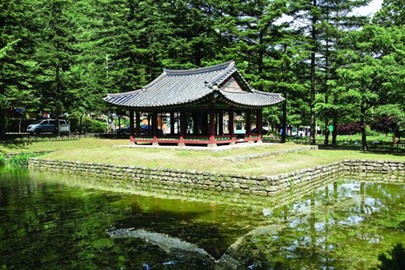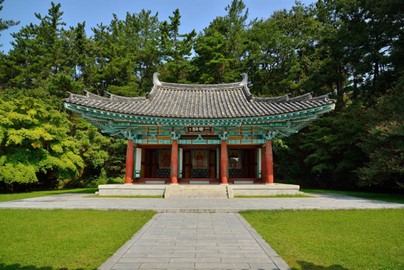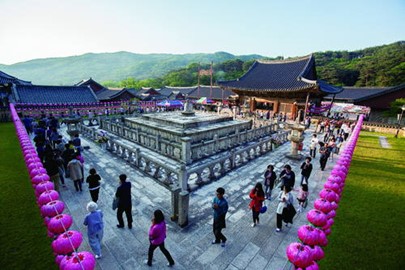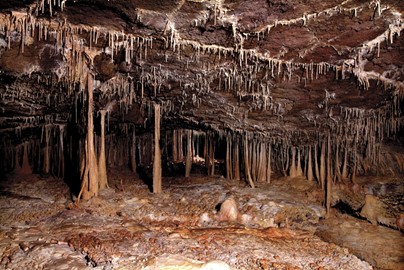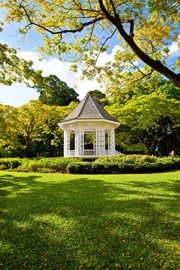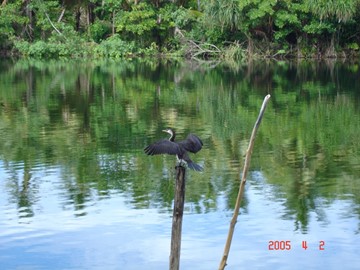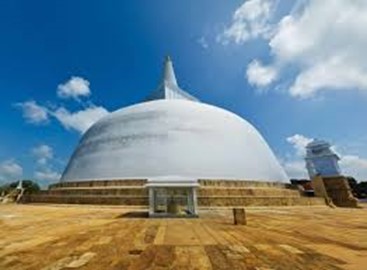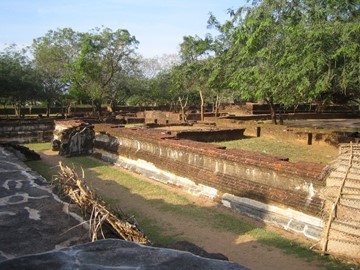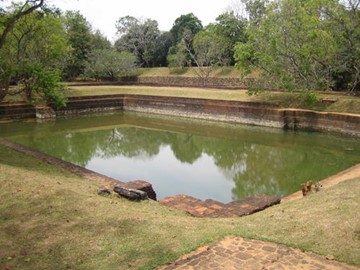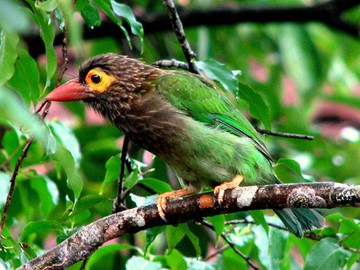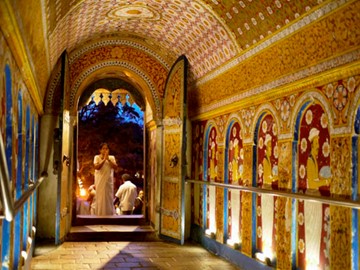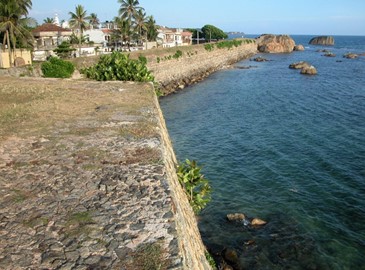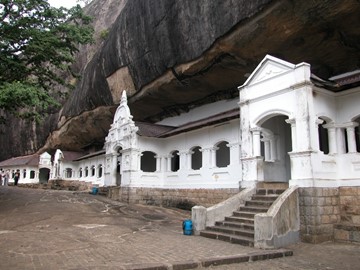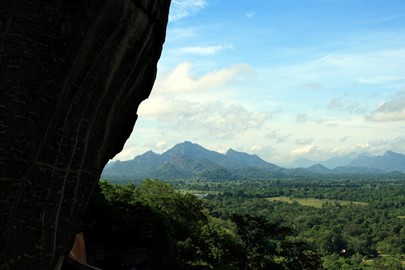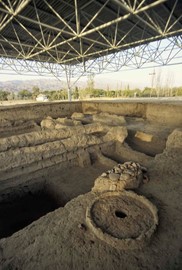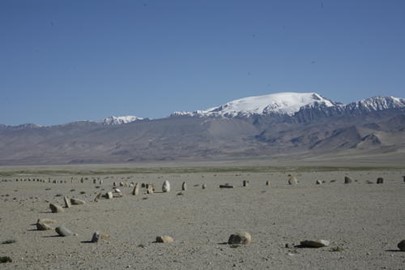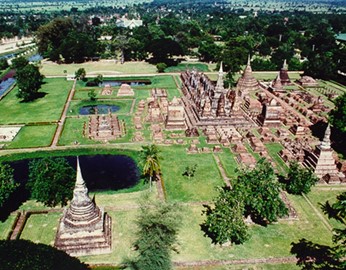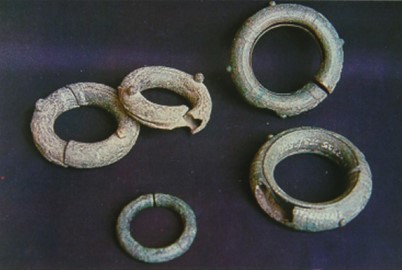region :: asia and the pacific
Jongmyo Shrine
Jongmyo Shrine, a UNESCO World Heritage site in Korea, is a Confucian royal ancestral shrine dedicated to commemorating the deceased kings and queens of the Joseon Dynasty. Constructed in 1394 during King Taejo’s reign, it embodies traditional East Asian architectural principles and houses the spirit tablets of royalty in a serene, ritual-focused setting. The shrine hosts the Jongmyo Jerye ceremony, an ancient Confucian rite featuring music and dance, recognized as an Intangible Cultural Heritage. Its histo... Read More
Changdeokgung Palace
Changdeokgung Palace, a UNESCO World Heritage site in Korea, is a beautifully preserved example of Joseon Dynasty architecture, renowned for its harmonious blend with the natural landscape. Constructed in 1405 as a secondary palace, it became the primary royal residence after the destruction of Gyeongbokgung. The palace features elegant structures like Injeongjeon (the main hall) and Seonjeongjeon (the king’s office), alongside the serene Huwon (Secret Garden), showcasing traditional Korean design and royal... Read More
Hwaseong Fortress
Hwaseong Fortress, a UNESCO World Heritage site in Korea, is a remarkably preserved example of late 18th-century military architecture built during the Joseon Dynasty under King Jeongjo’s reign. Constructed between 1794 and 1796, it showcases a blend of Eastern and Western design influences, featuring defensive walls, gates, and towers engineered for both functionality and aesthetics. The fortress was originally designed to protect a new capital city and honor the king’s father, reflecting its historical an... Read More
Gyeongju
This UNESCO World Heritage site in South Korea encompasses a remarkable concentration of ancient temples, palaces, and royal tombs from the Silla Kingdom, which ruled from 57 BCE to 935 CE. Spanning multiple zones, it features well-preserved archaeological treasures like stone pagodas, Buddhist relics, and intricate rock carvings that showcase the kingdom’s architectural prowess and spiritual heritage. Visitors can explore sites that reflect a blend of natural beauty and historical significance, offering a ... Read More
Gochang, Hwasun and Ganghwa
The Gochang, Hwasun, and Ganghwa Dolmen Sites, recognized as a UNESCO World Heritage site in 2000, represent an exceptional collection of prehistoric megalithic tombs from the first millennium BCE. These sites showcase hundreds of dolmens—stone structures used as grave markers and for rituals—highlighting the advanced stonework and societal organization of the Bronze Age Megalithic Culture on the Korean Peninsula. With over 35,000 dolmens, Korea holds nearly 40% of the world’s total, and these locations pre... Read More
Hahoe and Yangdong
Hahoe and Yangdong, recognized as a UNESCO World Heritage site, are historic villages in Korea that exemplify traditional Confucian culture from the Joseon Dynasty. These well-preserved settlements showcase distinctive architecture, including thatched-roof houses and tiled-roof residences for the nobility, reflecting the social hierarchy of the era. The villages highlight traditional living patterns, with layouts designed to harmonize with the natural landscape, and they preserve cultural practices like fol... Read More
Royal Tombs of the Joseon
The Royal Tombs of the Joseon Dynasty, a UNESCO World Heritage site in Korea, are a collection of mausoleums built between the 15th and 20th centuries to honor the Joseon rulers and their families. These tombs exemplify traditional Confucian burial practices, featuring carefully designed layouts with stone statues, ceremonial pavilions, and natural landscapes that reflect harmony between architecture and nature. Recognized for their historical and cultural significance, they offer insight into the dynasty’s... Read More
Namhansanseong
Namhansanseong, a UNESCO World Heritage site in Korea, is a historic mountain fortress renowned for its well-preserved 17th-century architecture and strategic design. Constructed during the Joseon Dynasty, it served as a temporary capital and military stronghold, blending natural terrain with defensive walls and gates. The site reflects Korea’s historical resilience and ingenuity, offering insights into its cultural and military heritage. Today, it stands as a testament to the nation’s past, attracting visi... Read More
Baekje
The Baekje Historic Areas, a UNESCO World Heritage site in South Korea, encompass a collection of archaeological sites that showcase the rich history and culture of the Baekje Kingdom (18 BCE–660 CE). These well-preserved sites, including royal tombs, fortresses, and temples, highlight the kingdom’s sophisticated architecture, urban planning, and Buddhist influences. They also reflect Baekje’s role as a key player in East Asian cultural exchange, evident in its artistic and technological advancements. This ... Read More
Sansa, Buddhist Monasteries
Sansa, Buddhist Mountain Monasteries in Korea, is a UNESCO World Heritage site comprising seven temples established between the 7th and 9th centuries. These monasteries, known for their historical and cultural significance, reflect the development of Korean Buddhism and its integration with the natural landscape. They feature traditional architecture, including prayer halls and meditation spaces, and have served as active centers for Buddhist practice for centuries. This designation highlights their outstan... Read More
Jeju
Jeju Volcanic Island and Lava Tubes, a UNESCO World Heritage site, is renowned for its exceptional geological features, including a well-preserved system of lava tubes formed by volcanic activity thousands of years ago. The site showcases dramatic volcanic landscapes, such as the Geomunoreum lava tube system and the prominent Hallasan Mountain, a shield volcano with a crater lake at its summit. These natural wonders highlight the region’s unique biodiversity and provide valuable insights into volcanic proce... Read More
Singapore Botanic Gardens
The Singapore Botanic Gardens, a UNESCO World Heritage site, is a historic tropical garden renowned for its extensive collection of plants and significant contributions to botanical research. Established in 1859, it features beautifully landscaped gardens, including the National Orchid Garden, which houses over 1,000 orchid species and 2,000 hybrids. This serene oasis serves as a vital green space, offering educational programs and conservation efforts that highlight its global importance in horticulture an... Read More
East Rennell
East Rennell, located in the Solomon Islands, is a UNESCO World Heritage site renowned for being the largest raised coral atoll in the world. This remote location hosts a rich biodiversity, including unique species of birds, bats, and invertebrates, thriving within its dense forest and extensive lake system. The site holds significant cultural value to the local Polynesian population, who maintain traditional practices tied to the land and its resources. Its natural beauty and ecological importance make it ... Read More
Anuradhapura
Anuradhapura, a UNESCO World Heritage site in Sri Lanka, is an ancient city renowned for its historical and cultural significance. Founded in the 4th century BCE, it served as the island's first capital and a major center of Buddhism, featuring impressive stupas, monasteries, and the sacred Sri Maha Bodhi tree, grown from a cutting of the tree under which Buddha attained enlightenment. The site also showcases advanced ancient engineering through its well-preserved irrigation systems and reservoirs. Today, i... Read More
Polonnaruwa
Polonnaruwa, a UNESCO World Heritage site in Sri Lanka, is an ancient city renowned for its well-preserved ruins and historical significance as a medieval capital. Established in the 11th century, it features impressive architectural remains, including royal palaces, temples, monasteries, and intricately carved statues, such as the famous Gal Vihara rock reliefs. The site also showcases advanced irrigation systems, reflecting the engineering prowess of its time. Today, it stands as a testament to Sri Lanka’... Read More
Sigiriya
Sigiriya, a UNESCO World Heritage site in Sri Lanka, is an ancient rock fortress renowned for its historical and architectural significance. Built in the 5th century by King Kashyapa, it features a massive rock column rising dramatically from the surrounding landscape, topped with a palace complex. The site is famous for its well-preserved frescoes, intricate water gardens, and the iconic Lion Gate, reflecting advanced engineering and artistic mastery of the era. Today, it stands as a testament to Sri Lanka... Read More
Sinharaja Forest
Sinharaja Forest, a UNESCO World Heritage site in Sri Lanka, is a biodiverse tropical rainforest renowned for its rich ecosystem. It serves as a habitat for numerous endemic species, including rare birds, mammals, and plants, making it a critical conservation area. The forest’s lush canopy and unique flora attract researchers and nature enthusiasts alike. Its global significance lies in its role as a living testament to the island’s ecological heritage.
Kandy
Kandy, a UNESCO World Heritage site in Sri Lanka, is a historic city renowned for its cultural and spiritual significance. It served as the last capital of the Sinhala kings, preserving a rich legacy of traditions and architecture. The city is home to the Temple of the Tooth Relic, one of Buddhism's most sacred shrines, housing a tooth of the Buddha. Kandy's vibrant festivals, notably the Esala Perahera, attract visitors with their elaborate processions and ancient rituals.
Galle
The Old Town of Galle, a UNESCO World Heritage site in Sri Lanka, is a well-preserved colonial fortress showcasing a blend of European and South Asian architectural influences. Built by the Portuguese in the 16th century and later expanded by the Dutch, it features sturdy ramparts, historic buildings, and charming streets that reflect its rich past as a key trading port. Today, it stands as a living testament to the island's colonial history, attracting visitors with its cultural significance and scenic coa... Read More
Golden Temple of Dambulla
The Golden Temple of Dambulla, a UNESCO World Heritage site in Sri Lanka, is a remarkable cave temple complex dating back to the 1st century BCE. This sacred site features five caves adorned with over 150 statues of Buddha, intricate murals, and ancient rock paintings that showcase a blend of religious and artistic heritage. The temple, also known as Dambulla Rock Temple, served as a refuge for King Valagamba during his exile and remains a significant pilgrimage destination today. Its well-preserved rock-cu... Read More
Central Highlands
The Central Highlands, a UNESCO World Heritage site in Sri Lanka, is renowned for its breathtaking biodiversity and stunning landscapes. This protected region encompasses montane forests, grasslands, and rugged peaks, harboring a rich array of endemic flora and fauna, including rare species like the Sri Lankan leopard and purple-faced langur. The area also holds cultural significance with ancient tea plantations and colonial-era architecture, reflecting its historical role in the island's tea industry. Its ... Read More
Sarazm
Sarazm, a UNESCO World Heritage Site in Tajikistan, is an ancient proto-urban settlement dating back to the 4th millennium BCE, showcasing the early development of human civilization in Central Asia. This archaeological site highlights a thriving Bronze Age community engaged in agriculture, metallurgy, and trade, with evidence of cultural and commercial connections stretching from Turkmenistan to the Indus Valley. Discovered in 1976 and excavated starting in 1977, Sarazm offers a glimpse into a sophisticate... Read More
Tajik National Park
Tajik National Park, a UNESCO World Heritage site in Tajikistan, is renowned for its stunning natural beauty and rich biodiversity. The park features dramatic mountain landscapes, including some of the highest peaks in Central Asia, alongside pristine lakes, rivers, and glaciers. It serves as a critical habitat for rare species like the snow leopard and Marco Polo sheep, making it a vital conservation area. This protected region also holds cultural significance, with ancient archaeological sites and traditi... Read More
Sukhothai
Sukhothai, a UNESCO World Heritage site in Thailand, is an ancient city renowned for its historical and cultural significance as the first capital of the Siamese Kingdom in the 13th and 14th centuries. The site features well-preserved ruins, including elegant temples, Buddha statues, and intricate stupas, showcasing the distinctive Sukhothai architectural style that influenced Thai art and culture. It is celebrated as the birthplace of Thai civilization, with its name translating to 'Dawn of Happiness,' ref... Read More
Ban Chiang
Ban Chiang, a UNESCO World Heritage Site in Thailand, is a significant prehistoric archaeological site dating back to 1495 BC, showcasing the earliest evidence of farming, wet-rice agriculture, and bronze tool-making in Southeast Asia. Discovered in 1966, it marks a pivotal stage in human cultural, social, and technological evolution, with findings like red-painted pottery and metal artifacts highlighting a sophisticated early civilization. Designated in 1992, the site features a museum displaying these anc... Read More





